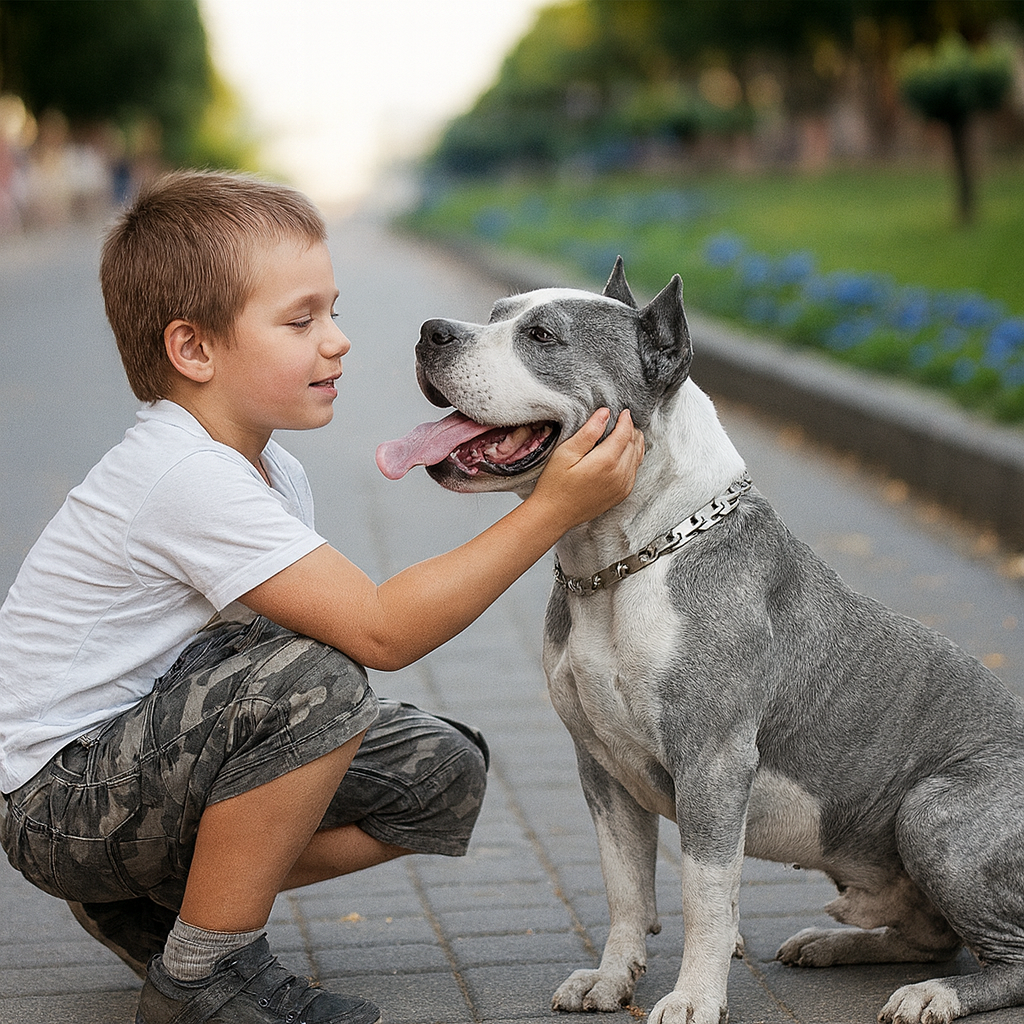Is stubborn dog training driving you crazy? Actually, you don’t have a stubborn dog at all. What looks like stubbornness is often something completely different.
Breeds like Shiba Inus, Beagles, and Dachshunds frequently get labeled as “stubborn,” but there’s a reason for this behavior. According to the canine genome structure, trainability is an inherent trait among dogs. However, some dogs are simply less responsive—they might be distractible, unmotivated by food, or appear uncooperative. Instead of stubbornness, you’re likely dealing with a smart dog that notices a lot and works extra hard to see patterns. With over 30 years of experience in dog training, we at Dog Dynamics understand these challenges and have developed effective methods to help you establish a harmonious relationship with your pet.
In this guide, we’ll share expert tips on how to train a stubborn dog and transform what seems like defiance into positive learning. If your dog can be tenacious about unwanted behaviors, we can certainly help you channelize that determination into something more desirable. Let’s discover the stubborn dog training tips that actually work!
Understand Why Your Dog Seems Stubborn
When your dog ignores commands or seems to deliberately disobey, what’s really happening behind those innocent eyes? Understanding the root causes of perceived stubbornness is essential for effective training.
Common traits mistaken for stubbornness
Many behaviors owners label as “stubborn” actually stem from miscommunication or unmet needs. Your dog isn’t giving you the canine equivalent of “the finger” – they’re trying to tell you something important. Dogs communicate primarily through body language and visual cues while we rely on verbal communication, creating a significant communication gap. This disconnect often leads to misunderstandings and perceived defiance.
Other factors commonly misinterpreted as stubbornness include:
- Medical issues or pain making certain movements uncomfortable
- Fear or stress responses to environmental triggers
- Lack of proper training or understanding of commands
- Competing motivations (like interesting smells or distractions)
How breed and genetics influence behavior
Genetics play a significant role in your dog’s behavioral tendencies. Research shows breed explains approximately 9% of behavioral variation in individual dogs. Certain breeds have inherited traits that make them more independent or strong-willed. For instance, terriers were bred to fearlessly hunt small mammals and consequently show more predatory behavior and dog-directed aggression.

The average heritability across breeds ranges from 0.16 for non-social fearfulness to 0.26 for aggressiveness. Nevertheless, this doesn’t mean your dog is destined to be untrainable – it simply means you need training approaches tailored to their genetic predispositions.
The role of past experiences and environment
Early life experiences profoundly shape your dog’s behavior. Dogs that experienced adversity during their first six months showed significantly increased aggression and fearfulness in adulthood. Furthermore, dogs with harsh early life histories demonstrated higher average cortisol levels (stress hormone) than those reared in supportive environments.
Environmental factors also significantly impact training effectiveness. Even well-trained dogs can appear completely untrained when overwhelmed by environmental distractions. Additionally, hormonal influences and stressors in the environment can diminish a dog’s ability to focus on training.
Understanding these underlying factors transforms stubborn dog training from frustration to partnership. By addressing the real causes rather than assuming willful disobedience, you’ll develop more effective training strategies tailored to your unique companion.
8 Expert Methods to Train a Stubborn Dog
Now let’s get into the practical methods that truly work for training dogs that seem resistant to traditional approaches. These techniques are backed by science and professional experience.
1. Use high-value rewards to motivate
For dogs that appear stubborn, ordinary kibble often won’t cut it. High-value treats create powerful positive associations with learning commands. These rewards should be irresistible—typically made of real meat with strong scents that activate your dog’s powerful nose. Essentially, they make your dog feel like they’ve “hit the jackpot” for performing desired behaviors. Consider these treats an investment in your training success, not just a bribe.
2. Keep training sessions short and focused
Many dog owners make the critical mistake of training for too long. Training fatigue causes dogs to lose interest, take longer to respond, and potentially develop negative associations with learning. Limit sessions to 5-10 minutes maximum. Even professional trainers use multiple short daily sessions rather than marathon training. This approach keeps your dog mentally engaged and prevents frustration.
3. Be consistent with commands and routines
Dogs thrive on predictability and pattern recognition. When commands change between family members (like one saying “sit” and another saying “sit down”), you create confusion that appears as stubbornness. Moreover, inconsistent rules about behavior (like allowing jumping sometimes but not others) teach dogs that rules are negotiable. Create a unified approach where everyone uses identical words, tones, and expectations.
4. Break tasks into small, achievable steps
Complex behaviors must be broken down into manageable pieces. For example, teaching a recall involves separate skills: staying at a distance, responding to the call, approaching directly, and sitting in front. First, identify each component skill. Then, teach them separately before linking them together. This “splitting” approach prevents overwhelming your dog and builds confidence through incremental successes.
5. Practice basic commands in different settings
Dogs don’t automatically generalize what they learn. A perfect “stay” in your kitchen doesn’t mean they’ll stay when guests arrive. Gradually introduce distractions by practicing in different rooms, then your yard, then public spaces. Start with minimal distractions and progressively make environments more challenging as your dog succeeds.
6. Identify and manage your dog’s triggers
“Trigger stacking” occurs when dogs experience multiple stressors within a short timeframe, causing them to react to otherwise minor situations. Pay attention to what specifically sets your dog off—whether it’s other dogs, strangers, or environmental factors. Initially avoid these triggers while developing a training plan. This prevents the behavior from becoming an ingrained habit.
7. Avoid reinforcing unwanted behaviors
Dog owners unintentionally reward problem behaviors through attention. When your dog jumps and you respond with baby talk or petting, you’re teaching them that jumping works. Likewise, barking dogs that receive any attention (even negative) learn that barking gets results. Instead, completely ignore unwanted behaviors and consistently reward alternatives you prefer.
8. Seek professional help when needed
Professional trainers bring expertise in dog psychology and specialized techniques. Consider expert help particularly for aggression, separation anxiety, or if your dog has escaped your property. A qualified behaviorist can develop customized training plans that address your specific situation. They’ll also teach you the skills to maintain progress long-term.
Build a Positive Training Environment
The setting where you train your stubborn dog matters as much as the methods you use. Creating the right environment can transform seemingly resistant behavior into eager participation.
Create a distraction-free space
Even the best-trained dogs can appear completely untrained when overwhelmed by environmental distractions. Choose a quiet area free from loud noises, other animals, and tempting items that could divert your dog’s attention. Consider using barriers or enclosures to limit access to distractions during stubborn dog training. Throughout the initial training phase, this controlled setting helps your dog concentrate better on learning new commands. Only after basic skills are mastered should you gradually introduce distractions as part of advanced training.
Use calm and assertive body language
Since dogs are naturally attuned to body language, your physical presence plays a crucial role in training a stubborn dog. Use big, broad gestures that can be seen clearly, especially if your dog might be otherwise distracted. Stay attuned to your dog’s emotional state so you can adjust interactions based on their comfort level. This awareness helps prevent situations where your dog might display unwanted behaviors out of stress or anxiety.

Involve all family members in training
Consistency forms the foundation of successful stubborn dog training. When everyone in the household uses identical commands, hand signals, and rewards, your dog learns more quickly and effectively. Consider holding a family meeting to establish a “shared language” for your dog’s training and create a cheat sheet everyone can reference. This unified approach ensures your stubborn dog receives clear expectations regardless of who gives the command.
Track Progress and Stay Encouraged
Successful stubborn dog training depends not only on the right techniques but also on your mindset throughout the process. Tracking progress helps you maintain motivation and see improvement even during challenging times.
Celebrate small wins
Acknowledging daily achievements boosts your dog’s confidence and strengthens your bond. Every small success represents important progress in your training journey. When your dog shows improvement, celebrate immediately with their favorite treat, cheerful praise, or a quick game of fetch. Consider documenting these moments with photos or videos – they provide tangible evidence of growth and help you stay motivated when facing setbacks.
Adjust techniques based on your dog’s response
Whenever you hit a training obstacle, consider the situation from your dog’s perspective. Are your cues confusing? Does your emotional state affect your dog’s ability to focus? Dogs learn at different paces and may need alternative approaches. By carefully observing your dog’s body language, you’ll know when to make exercises more challenging or simpler based on their individual needs.
Stay patient and persistent
Changing behaviors can take weeks to months, depending on how self-rewarding the unwanted behavior has been. Remember that patience, persistence, and consistency are crucial for successful stubborn dog training. When comparing your dog’s progress, focus only on where they started versus how far they’ve come. This perspective shift allows you to appreciate each successive approximation as its own victory, much like everyone cheering for the little engine that could.
Conclusion
Training a dog labeled as “stubborn” certainly requires patience and understanding. Throughout this guide, we’ve seen that what appears as stubbornness actually stems from miscommunication, genetic predispositions, or environmental factors rather than willful disobedience. You can read from this article published on vcahospitals.
Dogs respond differently based on their individual temperaments and past experiences. Therefore, adapting your training approach to match your dog’s specific needs becomes essential for success. The eight expert methods we’ve explored provide practical solutions to transform challenging behaviors into positive learning opportunities.
Remember that consistency forms the foundation of effective training. Short, focused sessions with high-value rewards will yield better results than lengthy, frustrating encounters. Breaking tasks into manageable steps additionally helps your dog build confidence through incremental achievements.
Your training environment matters just as much as your techniques. A calm, distraction-free space coupled with clear body language creates ideal conditions for learning. Most importantly, every family member must use identical commands and expectations to avoid confusion.
Progress might seem slow at times, but each small victory deserves celebration. Your dog won’t transform overnight; however, with persistent application of these methods, you’ll gradually notice significant improvements. The journey may challenge you both, but the strong bond and mutual understanding you’ll develop make every effort worthwhile.
Patience, understanding, and positive reinforcement ultimately work far better than frustration or punishment. Your “stubborn” dog isn’t trying to defy you—they simply need the right approach to unlock their full potential. Armed with these expert methods, you now have everything needed to turn training challenges into rewarding experiences for both you and your canine companion.




















Leave a Reply